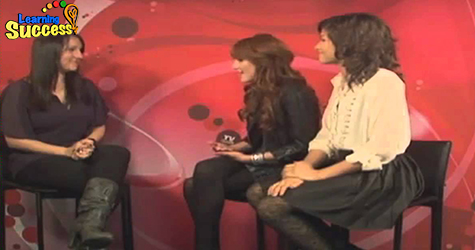Every child knows that when you say Disney, they would immediately think of princes and princesses and happily ever afters. But Disney has ventured into making television series for years now via Disney Channel. One particular and updated known character that rose to fame is Hannah Montana played by Miley Cyrus. But now that Miley, who is targeting the adult audience now, Disney Channel has found a new girl to fit in the shoe, her name is Bella Thorne. Bella, who said she is dyslexic, will portray CeCe Jones character from the fictional program called “Shake It Up Chicago” will deal with dyslexia and other learning disabilities. “She tries her best to stay in school, to stay on the show. Sometimes it’s really challenging. Sometimes she handles it kind of rough.” It's appreciating to know that a company like Disney gives importance to those who have learning disabilities. By creating a television show that tackles such disorder gives other people the chance to understand it. Read more: New Disney Channel star to tackle dyslexia and Learning difficultiesRead more
Blogs
Judy Hanning's blogs
Neuroscience of Learning / Dec 27, 2010

When a child performs poorly in school, it's entirely possible that the problem is with their own memory.Read more
Dyslexia / Dec 21, 2010
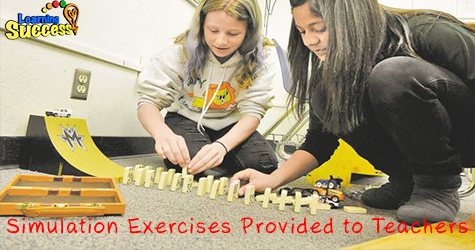
Teaching for some is a profession but for some it is their passion. It is not easy to impart the lessons the teachers want to give to their students specially to those who have learning disabilities. But the teachers must also remember that the knowledge they want to give the children is not that easy for them as well. The dyslexia simulation exercises provided by Southeastern Louisiana University aims to do this assist both the students and teachers. “The role of an insightful teacher in working with a child with dyslexia is critical, and their perceptions play an important role in learning,” explained Elizabeth Wadlington, professor of teaching and learning in the College of Education and Human Development. She coordinates dyslexia simulation exercises for students at Southeastern every semester." “Dyslexia causes difficulty in language processing,” she added. “The kids may be bright and intelligent and can see and hear just as well as everyone else, but they have a problem processing the information in their brains.” Southeastern Louisiana University has taken the step to further help dissolve the barriers of dyslexia. Institution like this should be applauded for thinking of ways to help the education system better. Read more : Dyslexia: Simulation Exercises Prepare TeachersRead more
Neuroscience of Learning / Dec 20, 2010
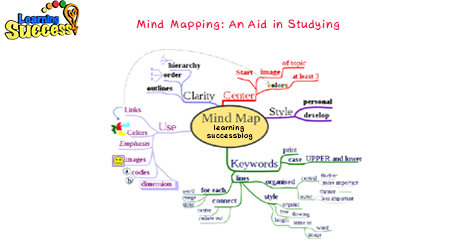
Studying is not always a pleasant thing to do. I know because I've been there. There are times that I do not want to study but I need to and this is the dilemma that most students are experiencing. Thanks to those who thought of ways to make studying easy. Mind mapping is one of them. From Wikipedia "A mind map is a diagram used to represent words, ideas, tasks, or other items linked to and arranged around a central key word or idea. Mind maps are used to generate, visualize, structure, and classify ideas, and as an aid to studying and organizing information, solving problems, making decisions, and writing." Mind maps assists you in generating a visual representation of linked ideas without losing your purpose. Mind maps enables you to remember the key facts and the important information you need. "But be warned. Mind maps aren’t a perfect study tool: “ A disadvantage of mind mapping is that the types of links being made are limited to simple associations. Absence of clear links between ideas is a constraint. ” ( There are more ways on how you can make studying easy and enjoyable. It's your decision which you would like to use and which best suites you. Read more: Intro to Mind mapping to help studyRead more
Dyslexia / Dec 20, 2010
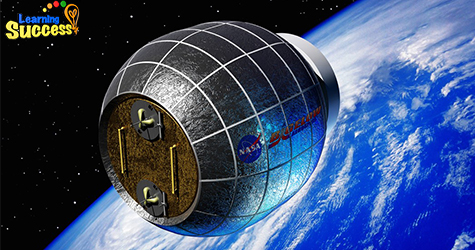
What could be more fascinating to a child than having an astronaut for a teacher. The astronauts will assist the children to learn the alphabet and vocabulary through educational demonstrations. "NASA collaborated with Sesame Workshop, including the popular children’s television programs, "Sesame Street" and "The Electric Company," to create science, technology, engineering and math-related education resources, or STEM, for children ages 2-5." According to Matthew Keil of NASA's Johnson Space Center in Houston, the space station environment gives a different classroom to educate young children by showing them what the words represent. "Sesame Workshop approached the NASA Teaching from Space Office for assistance in implementing more science and math curriculum into their programming by using the unique educational environment of the space station, NASA centers and facilities and the unique people who work at NASA." "I am an educator who is very interested in making connections between curriculum and everyday life experiences that students encounter," said Keil. It is so reassuring that there are organizations like this who are willling to help make education fun especially to those experiencing difficulty in learning. Read more:Read more
Dyslexia / Dec 19, 2010
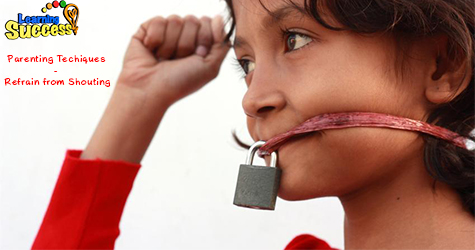
Raising your children is not easy. More often than not, you tend to shout at them when the overwhelming feeling has set in. Here are a few techniques that will help change your children's behavior: 1. “Whisper Technique “-We learn at an early age that anything that is being whispered MUST be something secretive worth listening to. Therefore, your child is more apt to pay attention to a whisper rather than to shouting, AGAIN. Whispering sets a calm atmoshpere than leads to a peaceful home environment. 2. “Chore Charts” – Chore charts can really help by posting it in a prominent area where everyone will see it every day. Just make sure to evenly divide the tasks that needs to be done. "It's also important to rotate the less desirable jobs, so that no one “always gets stuck with the worst job”" 3. Token Economy System -If behavioural issues are a major problem for certain children, then you may create a weekly or monthly calendar or chart that shows how behaviours are progressing through the week. "Make a list of the behaviours that can gain positive points and the behaviours that would accrue negative points. Make certain the points are weighted appropriately." These are just a few techniques that might help both you and your child to have a positive relationship. Read full details on: Parenting Techniques - Stop shouting!Read more
Neuroscience of Learning / Dec 19, 2010
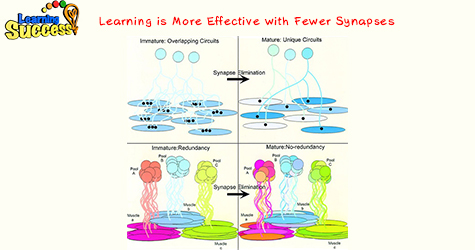
One of men's best characterics is persistence. When a man is determined to find something that can make his life more meaningful, he will stop at nothing to get what he wants. That is persistence! We are lucky that most of the scientists of our time are persistent in studying and looking for cures to all of men's ailments. In the issue of journal neuron, Yale University researchers have found that a single molecule not only connects brain cells but also changes how we learn. They discovered ways on how to improve the memory and new therapies to correct neurological disorders. "The junctions between brain cells over which nerve pulses pass -- called synapses -- are crucial for regulating learning and memory and how we think. Aberrations in the structure and function of synapses have been linked to mental retardation and autism, while synapses are lost in the aging brains of Alzheimer's patients." The Yale scientist may have discovered the effects of the synapses but organizing is still a puzzle that needs to be solved. A molecule called SynCAM 1 that spans across synaptic junctions has been pinpointed as a critical piece to the puzzle. "We hypothesized that this molecule might promote new synapses in the developing brain, but were surprised that it also impacts the maintenance and function of these structures," said Thomas Biederer, associate professor of molecular biophysics and biochemistry and senior author of the study. "We can now define how this molecule supports the brain's ability to wire itself."Read more
/ Dec 17, 2010
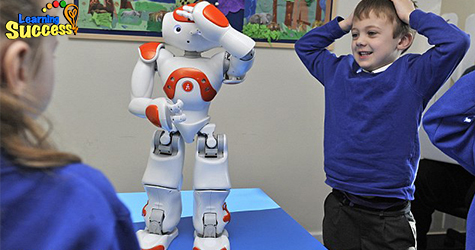
Children with autism not only have to deal with their curriculum activities. They also need to learn how to socialize with other people. According to a study funded by the National Institute of Mental Health (NIMH) that focusing and early intervention on the lack of social skills of children with autism spectrum disorders (ASD) helped in improving this skill. "Although some research suggests that ASD may be reliably diagnosed earlier than the current average age of 3 years, few interventions have been tested in children younger than 3." Children learned to interact with others by socializing with them. When the lack of measures in social communication, like initiation of joint attention, sharing of emotions and engaged imitation, can hinder the child's ability to engage and learn from interactions. "This new report is encouraging, as the effects on social behavior appear to provide a scaffold for the development of skills beyond the research setting," said NIMH Director Thomas R. Insel, M.D. "We need better early interventions for the core deficits of autism." These intervensions where formed to assist the children to learn how to interact or play with others. Read more on: Targetting Core Social Deficits of AutismRead more
Neuroscience of Learning / Dec 16, 2010
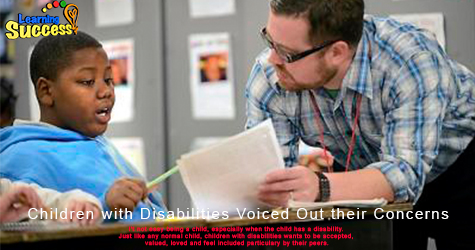
I't not easy being a child, especially when the child has a disability. Just like any normal child, children with disabilities wants to be accepted, valued, loved and feel included particulary by their peers. Dr. Nancy Spencer-Cavaliere, an adapted physical activity expert, in the Faculty of Physical Education and Recreation at the University of Alberta, interviewed children with a range of disabilities about their thoughts on what made them feel included or rejected during these activities. "Children were asked to theorise about other fictional children who are like them, so they didn't have to pour their hearts out initially if they didn't want to. So I'd start by saying, 'Imagine if you were…" Three themes emerged from the data: gaining entry to play; feeling like a legitimate participant, and having friends. "So what's a teacher, coach, parent to do to help kids with disability feel included? "When in doubt, ask the child," says Spencer Cavaliere. "You get valuable information and it gives them a say." Dr. Spencer-Cavalier emphasized that there is no specific solution because all children need to feel included by having legitimate choices they could choose from to experience inclusion. Read more on: Inclusion: Children With Disabilities Reveal their concernsRead more



